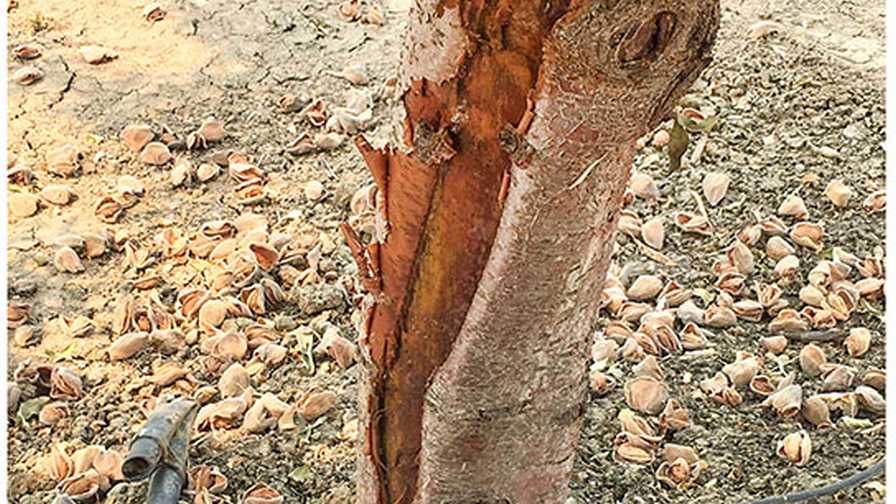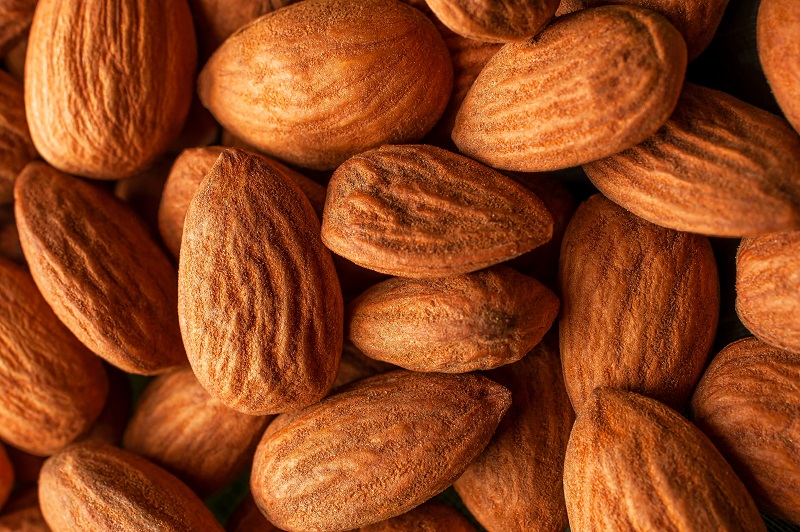Time To Revisit Ceratocystis Canker in Almonds
Back in the early 1970s, when almond trunk shakers were becoming mainstream, the novelty of the concept and the unfamiliarity of equipment operation and preharvest orchard prep led to many cases of trunk and scaffold damages and the resulting ceratocystis canker (CC) infections.
Much of this could be attributed to improper equipment maintenance, clamp pressures, and insufficient dry-down of the orchards prior to shaking. As shaker technology improved and drivers became more experienced, CC cases tapered off. A better understanding of irrigation cutoffs (varies with soil type, irrigation system, and growing region) also contributed much to reducing damages.
Shaker wounds and the accompanying CC is nothing new; however, lately I am noticing another spike in the amount of damage occurring as evidenced by evaluating many prime-aged orchards and by the calls I receive for shaker wound litigation cases (which I no longer take due to the ambiguous nature of the injuries and the subjectiveness of damage valuation assessments).
One thing I find particularly troubling is the amount of third- and fourth-leaf orchards that have sustained considerable damage. This is especially true on some of the more difficult-to-shake varieties. Years ago, young trees were hand knocked, and shakers were not used until about the fifth-to-sixth leaf, and even then, very carefully. Today it is common to see third- leaf orchards being shaken. Time and labor costs contribute to this.
A new almond orchard is a 20- to 25-year investment. To sustain trunk damages in the third or fourth year of the orchard’s life robs the grower of many years of productivity. While not every shaker wound will become infected with ceratocystis, the majority do become infected, which leads to the trees’ death in three to five years.
Without a doubt, shaking a tree trunk that is only 3 to 4 inches in diameter is a very delicate operation, but it has been and is being done successfully. It is also being done improperly. Over shaking to get every nut on varieties that are inherently difficult to knock, such as ‘Wood Colony’, ‘Padre’, and young ‘Independence’, can lead to bark injuries that may not necessarily be visible after shaking. Note: adjusting the shaker for young trees is also a factor, as is making sure the trees are sufficiently dried down to where the bark is tight.
Damaging the trunk of a tree at any age is undesirable, but it is particularly painful when it is a very young tree that has not even reached peak production. Growers should survey young blocks to make sure some of this subtle damage does not go unchecked. The orchard’s life can be maximized with proper adjustments, orchard management, and convincing the drivers that speed is not more important than quality of the work.











